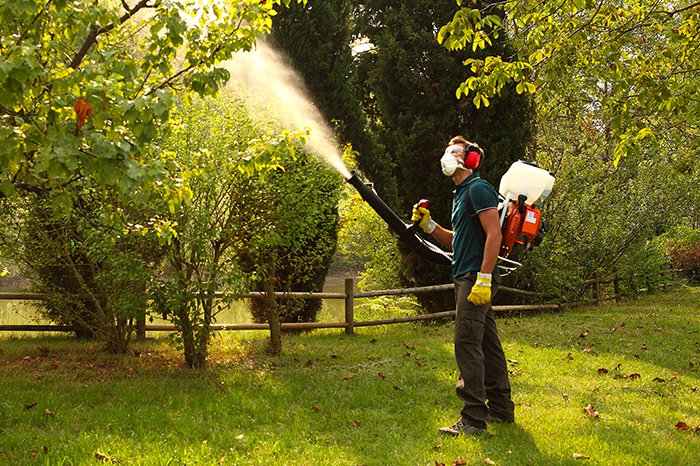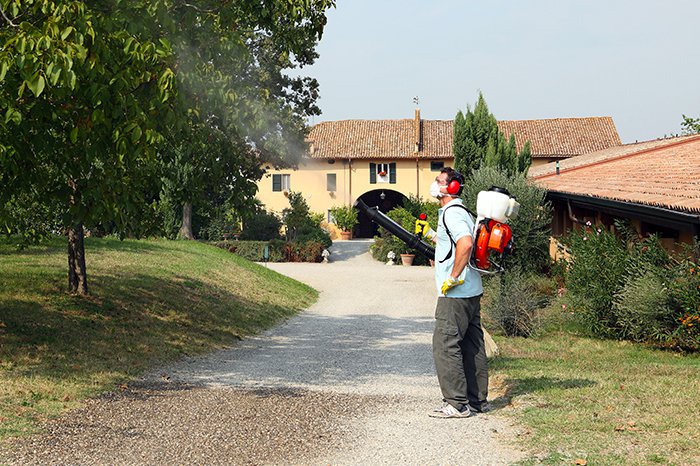How many enemies does your vegetable patch have? The answer is lots: viruses, bacteria and disease-carrying fungi; insects, mites, nematodes, molluscs that damage plants in various ways; and, last but not least, larger animals such as rodents, birds, wildlife and pets. Leaving aside the last category, can you ensure a good harvest by protecting your vegetable patch from insects and other tiny organisms without using toxic substances that are harmful to people and the environment?
Yes, you can: today we talk about natural treatments for the plants in your vegetable patch. We will consider not just pesticides in the strictest sense, which treat an existing infestation by eliminating the cause—for example a specific insect or fungus—but also preventive treatments (including repellents, which keep unwanted invaders at a distance, and reinforcing substances, which make vegetables less vulnerable to parasites).
Not just natural insecticides for plants
It’s fine to use organic insecticides, natural fungicides or other eco-friendly treatments on your vegetable patch, provided that you follow a series of good practices and avoid some common pitfalls. If your vegetable patch is not a healthy environment to start with, it can become a breeding ground for disease and parasites. So, make sure that in your vegetable patch:
-
There is a wide biodiversity of plants and animals.
-
The plants are appropriately spaced (i.e. not too crowded), and the vegetation is not overly dense but allows air to circulate.
-
The soil is fertile: this doesn’t mean getting carried away with fertilisers, which actually make plants more vulnerable to disease and parasites if overused.
-
Waterings should be well managed in terms of timing, quantity and method: the water should reach the roots, without soaking the leaves or stagnating around the roots.
-
The amount of sunlight exposure is appropriate, for example it shouldn’t be too shaded.
All these precautions help to minimise the need for treating the plants in your vegetable patch, whether with organic fungicides or organic pesticides. Increasing biodiversity in your vegetable patch means growing a diversity of vegetables, exploiting companion planting to deter pests (i.e. by using one species' advantages to protect another) and, finally, creating a hospitable habitat for insects that prey on parasites. Various herbs and some vegetables fulfil these roles: for example basil, sage, thyme and mint keep unwanted insects away from the garden, while fennel attracts ladybirds and parsley attracts wasps, both of which are aphid predators.
Do you want to find out more about plant pests? Check out our article on how to recognise and eradicate 10 of the most dangerous and widespread pests.
Speaking of good practices for the vegetable patch, you can find out how to prepare soil, sow and transplant vegetable plants in our guide on how to grow a vegetable patch. If your vegetable patch takes up a large swathe of your garden, you could use a garden tractor to soften up the soil.
Organic insecticides, natural fungicides and other garden treatments
To protect your vegetable patch from pests, you can take advantage of naturally occurring substances that have low or negligible toxicity, as well as the active ingredients of some plants in the form of infusions, extracts or even decoctions and macerates, which are better because they are more concentrated and effective. You can produce these at little or no expense using plants grown in your garden.
Fungicides prevent and stop the spread of diseases caused by fungi. Excellent natural fungicides include sulphur (particularly against powdery mildew) and copper (which has a broad spectrum of action but a mild effect). By mixing copper and lime you get a traditional and widely used agricultural fungicide: Bordeaux mixture. Although sulphur and copper are natural substances, they are not completely harmless: they should be used carefully and following the recommended dosage. You can also use "lighter" products as natural fungicides: decoction or macerate of horsetail, sweet orange essential oil, sodium bicarbonate and propolis.
Other natural insecticides for vegetable patch plants include:
-
Macerated nettle: this cheap natural insecticide is very effective against aphids, scale insects and some lepidopterans (butterflies and moths); it is also an acaricide (harmful to ticks and mites).
-
Decoction or macerate of garlic: both an insecticide and a repellent, it helps to counteract some fungal diseases and is a powerful natural antibacterial.
-
Macerated tomato: insecticide obtained from the plant's leaves and stem, which can be used against aphids and cabbage white caterpillars.
-
Macerated mint: ant repellent (not an insecticide), can be used in combination with macerated garlic or nettle to protect against aphids.
-
Natural pyrethrum: effective broad-spectrum insecticide (unfortunately it is also lethal to useful insects such as bees and ladybirds).
-
Spinosad: fairly broad-spectrum insecticide obtained from the fermentation of the bacterium Saccharopolyspora spinosa.
-
Neem oil: natural insecticide and repellent extracted from the seeds of a tree, it is effective and has a very low environmental impact (it doesn’t affect bees or other pollinators).
-
Sweet orange essential oil: this insecticide and acaricide is also indicated as a fungicide and bactericide.
-
Soft potassium soap: works against small insects such as aphids, scale insects and thrips; can also be used to rid vegetable plants of honeydew, which is secreted by aphids that in turn attract ants.
-
White oil: a mineral oil (derived from petroleum) that is allowed in organic farming and is particularly useful against scale insects and mites.
-
Propolis: not an insecticide, but a plant tonic that stimulates their resistance to bacteria, fungal diseases and aphids.


When and how to apply natural treatments in the vegetable patch
Human health hinges primarily on prevention, and the same goes for vegetables. Preventing vegetable patch pests means good growing practices, checking plants every day (or at least often) and, if something is wrong, promptly applying organic insecticides or natural fungicides, which are more effective if you discover the problem early. These remedies are less efficient when applied late, and depending on the treatment, you may want to reapply it several times.
In general, natural plant fungicides and insecticides are coverage treatments, i.e. they stay on the surface of the plant and do not penetrate into the tissues or lymphatic circulation, so they are easily washed away by rain and humidity. So, before you apply them, check the weather forecast. In addition, it is better to treat your vegetable patch when the sun has gone down and pollinating insects such as bees have returned to their nests.
The treatments must be sprayed on the above-ground part of the plants as accurately and evenly as possible, including any hidden spots (under the leaves): for this you can use a petrol engine backpack mistblower like the Oleo-Mac MB 800 and MB 900, or a sprayer pump. To choose which system is best for you, read the following article to find out the difference between a sprayer pump and a backpack mistblower.
So, how is it done in practice? If you’d like to know how to apply natural pesticide treatments and work safely with a backpack mistblower, you can read our tips on how to eliminate pests and weeds with a backpack mistblower.
Speaking of safety: even though we are talking about natural insecticides or treatments allowed in organic farming, it is always advisable to wear gloves, a face mask and a face shield or protective goggles.
Did you know that you can turn a blower like the Oleo-Mac BV 163 into a mistblower? We talk about it here: blower, vacuum cleaner and mistblower: 3 tools in one.









